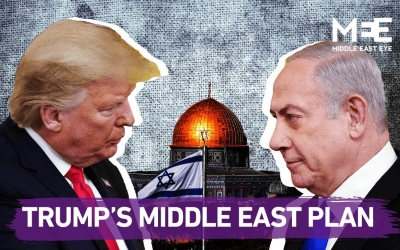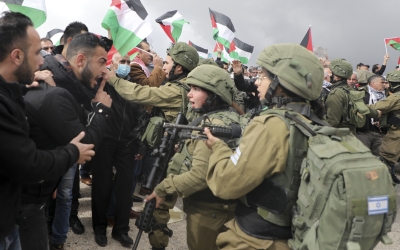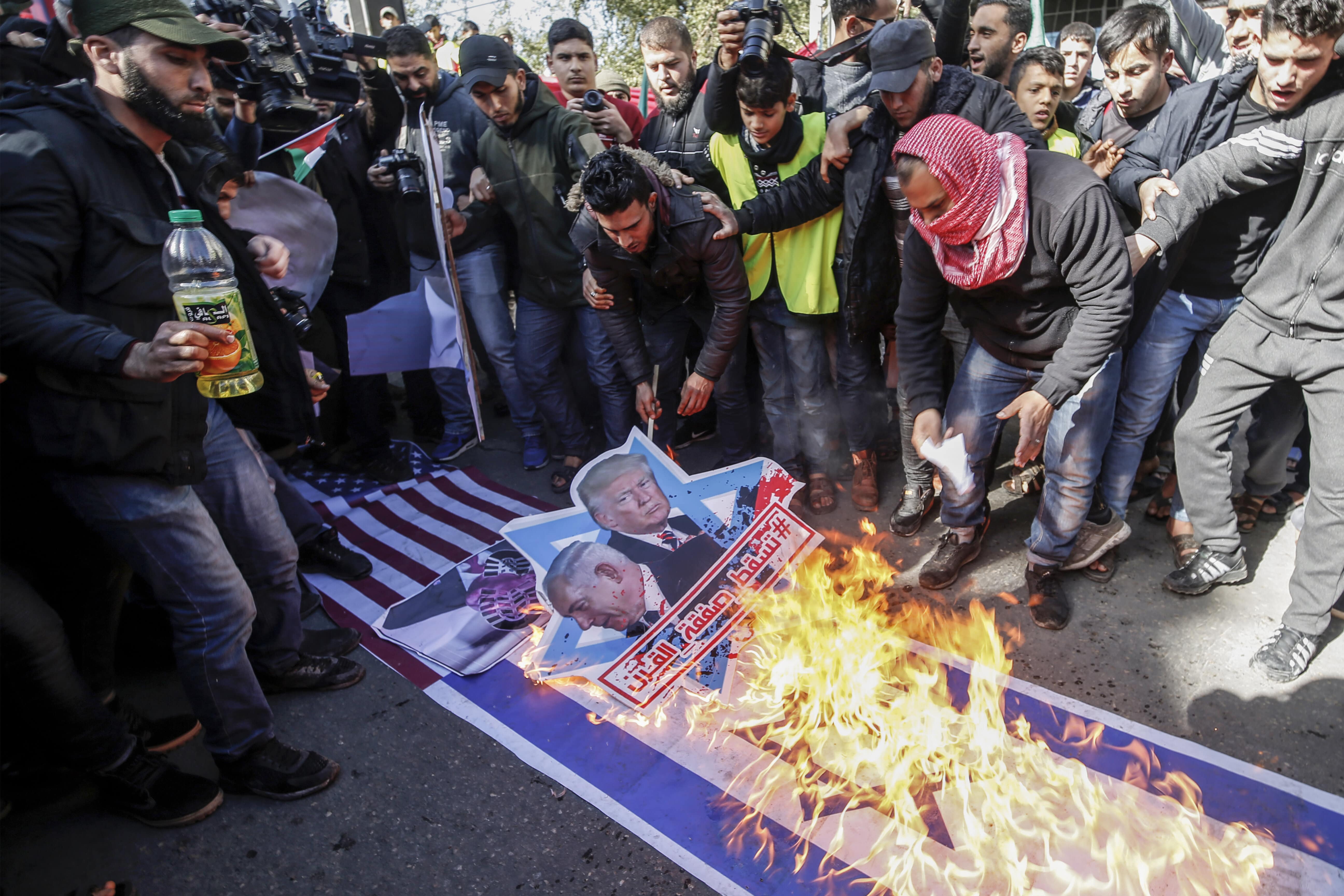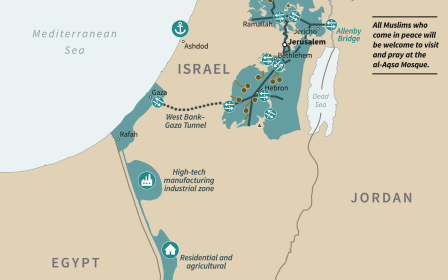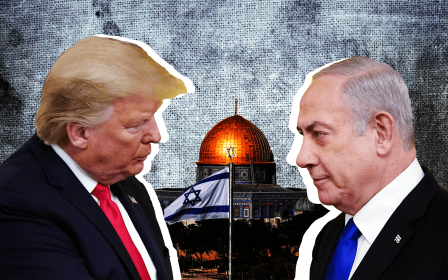'Jerusalem will not be divided': Palestinians protest against Trump's Israel-Palestine plan
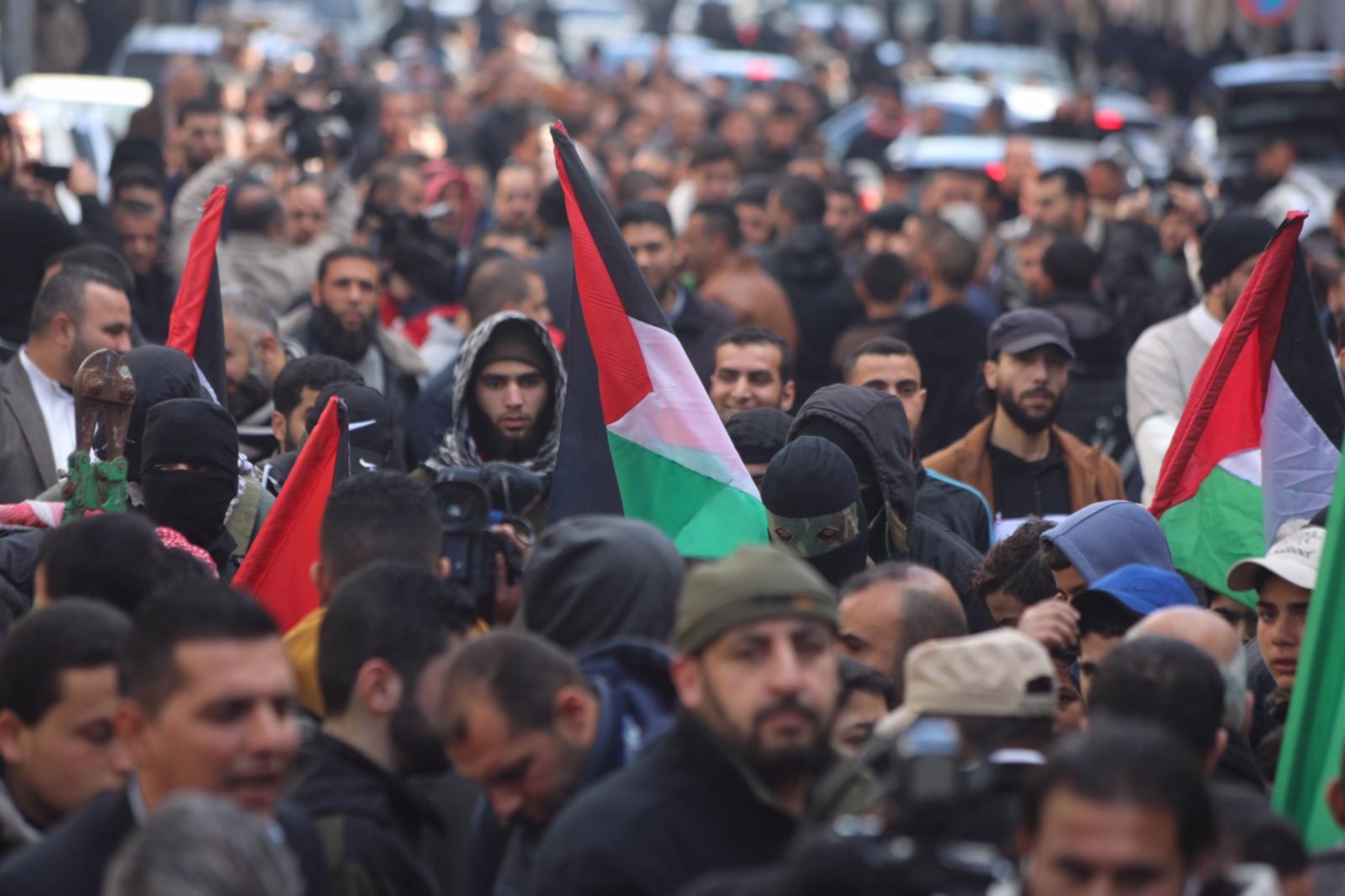
Palestinians held demonstrations across the occupied territories on Friday, three days after US President Donald Trump unveiled his proposal to end the Israeli-Palestinian conflict.
In the West Bank, including East Jerusalem, and the besieged Gaza Strip, thousands denounced the plan unveiled by the Trump administration for pushing forward a vision largely in sync with far-right Israeli demands.
New MEE newsletter: Jerusalem Dispatch
Sign up to get the latest insights and analysis on Israel-Palestine, alongside Turkey Unpacked and other MEE newsletters
Meanwhile in neighbouring Jordan, some 3,000 people took to the streets of the capital Amman to denounce the US proposal.
Trump's long-awaited 181-page document was released on Tuesday and contained conceptual maps showing how Israel and a future Palestinian state would appear.
The document allows for Israel to cement its full control over Jerusalem and its holy sites, formalise the annexation of much of the West Bank, maintain military control over a fragmented Palestinian state and deny the right of return to refugees who were forced to flee their homes in what became the state of Israel in 1948.
Before the plan was even released, rival Palestinian factions came out in unison against it, with thousands protesting in towns and villages in the occupied West Bank and in the Gaza Strip.
Since then, Jared Kushner, Donald Trump's son-in-law and architect of the plan, has called the Palestinians "quite foolish" for rejecting the agreement.
Kushner, who prior to joining the Trump administration, had no experience working in policy or politics, also said: "The Palestinians probably need a little bit of time to take a cold shower and to kind of digest the plan."
Great Fajr Campaign in Jerusalem
In East Jerusalem on Friday, Palestinian worshippers participated in the fourth Friday of what has been called the “Great Fajr Campaign”, in reference to the Muslim dawn prayer.
The campaign has urged Palestinian worshippers to maintain large crowds at the al-Aqsa mosque compound and the Ibrahimi Mosque in Hebron in the occupied West Bank, to show Palestinian devotion to their holy places and highlight their rejection of Israeli settler presence.
Hebron's Ibrahimi Mosque was divided to accommodate Jewish worship following a 1992 massacre that saw an Israeli settler murder 29 Muslim worshippers.
"The Palestinian people of al-Aqsa are trying to send a message to the occupation that Jerusalem will not be divided," Khaled Abu Sneineh, a demonstrator, told Middle East Eye.
Official Palestinian Authority news agency Wafa reported that Israeli forces fired rubber-coated steel bullets at protesters in the al-Aqsa compound, injuring ten - including one who was shot in the head - and detaining three others.
But in the wake of the deal's unveiling, Abu Sneineh said protesters remained even more determined to stand their ground.
"Palestinians want to send a message to Trump's so called 'deal' and the Zionists that support this deal: We will not give up, not on Jerusalem, nor its mosques, nor its holy sites," the Jerusalemite said.
Protests across the West Bank
In at least 12 separate locations across the occupied West Bank, thousands of Palestinians staged a "Friday of Rage" against Trump's deal.
Israeli forces fired live ammunition, rubber-coated steel bullets, tear gas and sound bombs at demonstrators. The Palestinian Red Crescent said in a statement that at least 48 Palestinians were injured across the West Bank.
Wafa news agency reported that at least three people were detained by Israeli forces.
In the Ramallah governorate, demonstrators in the village of Bilin - known for for its weekly marches against the occupation - raised Palestinian flags and a three-dimensional map of historic Palestine inscribed with "Jerusalem is the capital of eternal Palestine" and "Palestine is not for sale".
Protests also took place in Jericho, a sleepy Palestinian city not known for its political activism. Israeli media reported that an Israeli soldier was injured by a stone.
In the city of Hebron, Israeli forces fired heavy quantities of tear gas at demonstrators in Bab al-Zawiya Square.
Bab al-Zawiya is located on the outskirts of Hebron’s Old City, where some 800 Israeli settlers currently live under heavy military guard, making it the only Palestinian city in the West Bank that has Israeli settlers living inside it.
Burning tyres in Gaza
In the besieged Gaza Strip, thousands of Palestinians took to the streets after Friday prayers in mass demonstrations denouncing the Trump plan.
On Martyrs Square in Gaza City, chants erupted for Palestinian unity against the deal, which was called a "conspiracy".
Meanwhile, dozens of young Palestinians gathered near the boundary with Israel and burned tyres - where for nearly two years protesters have sporadically participated in the Great March of Return.
The Gaza Ministry of Health reported that at least 12 Palestinians were injured by Israeli forces near the barrier.
Earlier on Friday, Israel carried out air strikes on Hamas targets after three rockets were fired from Gaza the previous evening. No casualties or damages were reported.
Middle East Eye delivers independent and unrivalled coverage and analysis of the Middle East, North Africa and beyond. To learn more about republishing this content and the associated fees, please fill out this form. More about MEE can be found here.


